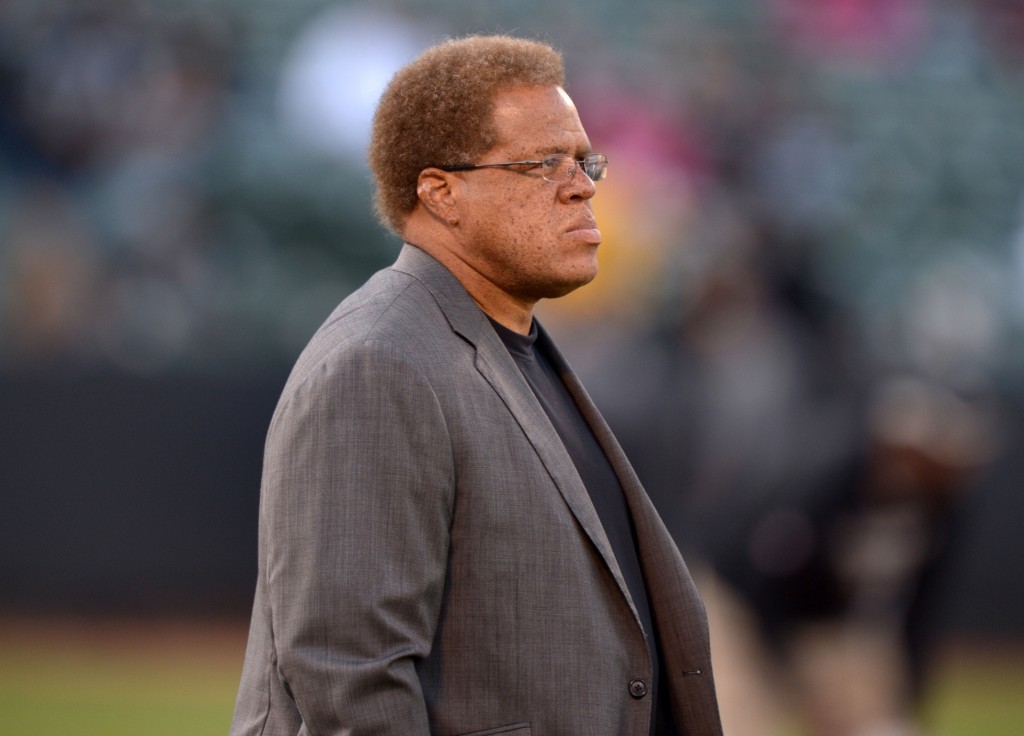
Tarell Brown is your newest Oakland Raider after signing a one-year, $3.5 million contract with the team late Friday afternoon. He’s the most recent example of general manager Reggie McKenzie, who was drawing the ire of the fan base just a couple days ago, turning around the Raiders offseason in the matter of a few dozen hours. Here are four reasons to believe that Oakland has in fact turned the corner this offseason.
1. Tarell Brown Signing
Official Press Release – Raiders Add @TarellBrown25: http://t.co/x7aZBMg9cD pic.twitter.com/OJqqJvf1iv
— OAKLAND RAIDERS (@RAIDERS) March 14, 2014
Brown struggled a tad this past season, but has started 42 games over the past three seasons for a team that has gone to at least the NFC Championship each season. He’s a dramatic upgrade from the recently departed Tracy Porter.
Brown is one year removed from ranking No. 4 overall among cornerbacks according to Pro Football Focus (subscription required). While he took a step back last season, some of that had to do with injury. Getting him on a one-year, $3.5 million deal was an absolute steal for McKenzie and Co.
2. Veteran Pass-Rusher Additions

Jason Bridge, USA Today: In addition to Tarell Brown, Raiders added some other veteran pieces.
Say what you want about acquiring aging players when in the midst of rebuilding, LaMarr Woodley and Justin Tuck are still darn good football players. Oakland was able to lock Tuck, who went for 11 sacks last season with the New York Giants, up on a two-year, $11 million contract. It’s this type of short-term contract for a productive player that indicates the Raiders are still planning to build through the draft.
Woodley, 29, brings a ton of pass-rush experience from the Pittsburgh Steelers. While it remains to be seen whether switching to a 4-3 will be an issue for him, his previous success speaks for itself. Like Tuck, his deal is salary-cap friendly at $6 million per season. It also enables the Raiders to draft and groom an eventual replacement while he learns from a savvy vet.
3. Spending the Money Wisely
Overpaying other team’s role players elite money on long-term contracts isn’t going to get a rebuilding team to where it needs to be. Instead, it should be all about finding stopgap options and a solid youngster or two at key positions. This is a model that the best organizations in the NFL have used, including McKenzie’s old stomping ground of Green Bay.
It enables the team to maintain salary cap flexibility down the road, while not paying role players All-Pro type money. This is a model that teams like the Miami Dolphins and Cleveland Browns have failed to use in previous seasons.
4. Emphasising Rebuild with Long-Term Plans

Kirby Lee, USA Today: McKenzie has a plan. He now needs to work it.
There are no quick fixes in the NFL outside of getting that once-in-a-generation quarterback. Everyone wants to give Indianapolis Colts’ general manager Ryan Grigson all the credit in the world for returning that team to the playoffs in the two seasons that followed a two-win campaign, but drafting Luck wasn’t exactly a genius move on his part. Indianapolis received the No. 1 pick and needed a quarterback. The rest was history.
Short of hitting lightning in a bottle, rebuild processes need to be planned with three or four years down the road in mind. Signing these quality veterans while not doling out long-term deals makes all the sense in the world. It’s now up to McKenzie and Co. to hit on the draft because that’s where the long-term solutions are going to come from.
Photo: Cary Emondsun, USA Today